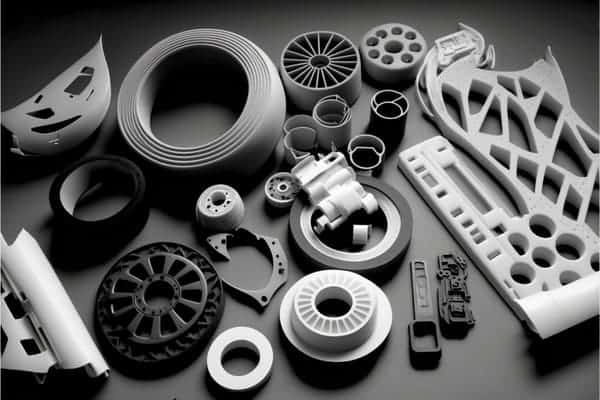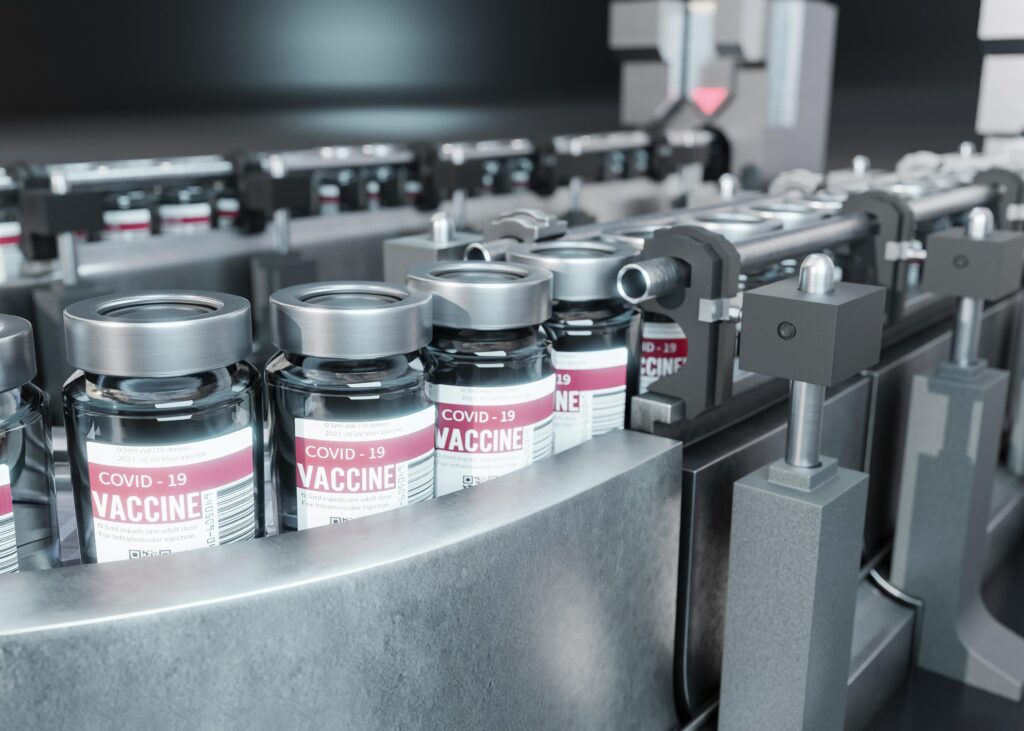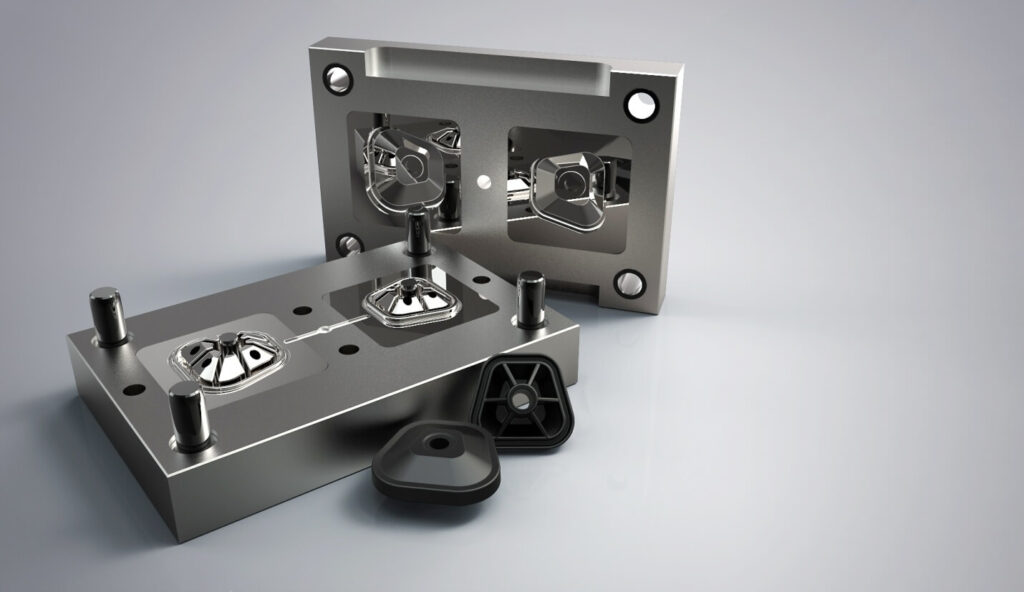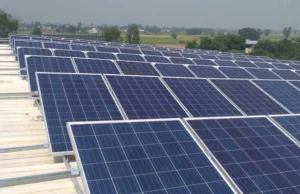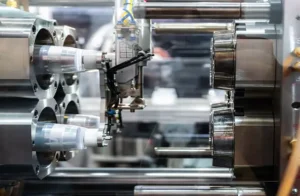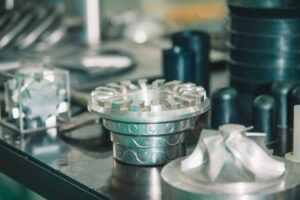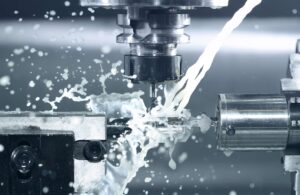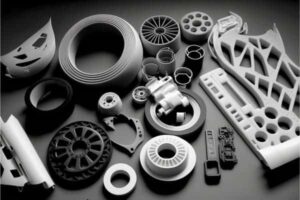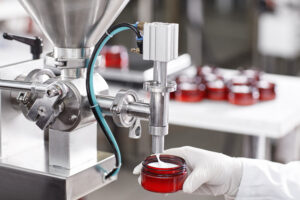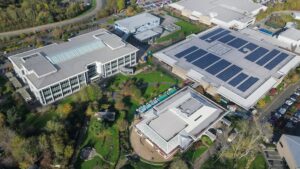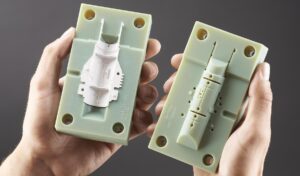Every successful product begins as an idea, but transforming that idea into a tangible, testable model requires the right manufacturing approach. This is where prototype injection moulding plays a pivotal role. It bridges the gap between concept and production, allowing designers and engineers to validate designs quickly and cost-effectively.
Unlike traditional manufacturing methods that demand expensive tooling and longer timelines, rapid prototype injection moulding offers an agile and efficient way to produce accurate prototypes that mirror the final product in function, form, and material. By leveraging the injection moulding process prototype, manufacturers can identify design flaws early, make precise adjustments, and move to large-scale production with confidence.
As one of India’s emerging leaders in manufacturing innovation, Manufyn provides end-to-end prototype injection moulding services that empower businesses to accelerate development without compromising on quality or precision.
What is Prototype Injection Moulding?
Prototype injection moulding is a specialized form of injection moulding prototype manufacturing that focuses on creating limited quantities of parts for design validation, functional testing, and pre-production analysis. It uses the same fundamental process as large-scale moulding, injecting molten material into a custom injection mould prototype — but with faster turnaround and lower tooling costs.
This method is ideal for manufacturers who want to verify part performance before full-scale production. Whether it’s testing the strength of plastic injection molding parts or assessing the fit and finish of complex molding machine parts, prototype moulding ensures that the final design performs exactly as intended.
Prototype injection moulding combines the precision of traditional moulding with the flexibility of rapid prototyping, making it an indispensable process for industries where innovation and speed to market are key.
The Injection Moulding Process for Prototypes
Prototype injection moulding is a specialized form of injection moulding prototype manufacturing that focuses on creating limited quantities of parts for design validation, functional testing, and pre-production analysis. It uses the same fundamental process as large-scale moulding, injecting molten material into a custom injection mould prototype — but with faster turnaround and lower tooling costs.
This method is ideal for manufacturers who want to verify part performance before full-scale production. Whether it’s testing the strength of plastic injection molding parts or assessing the fit and finish of complex molding machine parts, prototype moulding ensures that the final design performs exactly as intended.
Prototype injection moulding combines the precision of traditional moulding with the flexibility of rapid prototyping, making it an indispensable process for industries where innovation and speed to market are key.
The Injection Moulding Process for Prototypes
The injection moulding process prototype follows a systematic series of steps designed to turn digital designs into real, functional components. Although the process resembles standard production moulding, it is optimized for speed, flexibility, and cost efficiency — ideal for rapid prototype injection moulding projects.
Step 1: Design & Concept Validation
The process begins with the creation of a detailed 3D model of the part. Engineers use CAD software to design components that can be easily adapted for prototype production. This design stage ensures that the prototype injection mould reflects the final product’s geometry and function.
Step 2: Tooling & Mould Fabrication
An injection mould prototype is then created using materials such as aluminium or soft steel. These prototype tools are faster and more affordable to produce than hardened steel moulds used in mass production.
Step 3: Injection Moulding & Part Production
Using specialized molding machine parts, molten plastic is injected into the mould cavity under controlled pressure and temperature. Once cooled, the part solidifies and is ejected — forming high-precision plastic injection molding parts ready for testing.
Step 4: Testing & Refinement
The resulting injection moulding prototype is tested for strength, fit, and appearance. Engineers make any necessary design or material adjustments before moving to full-scale production.
By leveraging rapid prototype injection moulding, businesses can significantly reduce lead times while achieving production-quality results.
Benefits of Prototype Injection Moulding
Investing in prototype injection moulding services offers a range of advantages that directly impact product quality, development speed, and overall project cost. For companies looking to innovate faster, it’s an essential step before large-scale manufacturing.
1. Faster Product Development
With rapid prototype injection moulding, teams can create and test functional prototypes in a fraction of the time required by traditional methods. This allows for quicker iterations and reduced time-to-market.
2. Cost-Effective Design Validation
Producing an injection mould prototype is significantly cheaper than full-scale tooling. It enables manufacturers to identify and correct design flaws early, avoiding expensive rework later.
3. Real-World Testing
Unlike 3D-printed models, injection moulding prototypes are made from actual production materials, allowing for realistic performance testing of plastic injection molding parts.
4. Reduced Risk and Waste
By using a prototype injection mould, manufacturers minimize material waste and ensure each iteration brings them closer to the ideal final product.
5. High Precision and Surface Finish
Prototype injection moulding delivers smooth finishes and tight tolerances comparable to production-grade parts, making it ideal for presentation models and functional validation.
6. Supports a Wide Range of Materials
Whether it’s ABS, polycarbonate, or nylon, prototype injection moulding services accommodate multiple thermoplastics, helping test various materials before final selection.
For businesses aiming to shorten development cycles and maintain top-tier quality, Manufyn’s prototype injection moulding services provide the perfect balance of speed, precision, and cost efficiency.
Applications of Rapid Prototype Injection Moulding
Rapid prototype injection moulding has revolutionized how industries approach product testing, design validation, and market readiness. Its versatility makes it valuable across multiple sectors — from automotive and healthcare to electronics and consumer goods — wherever precision and speed are essential.
1. Automotive Industry
Manufacturers use prototype injection moulding to create complex car components such as dashboards, clips, and connectors. Testing these plastic injection molding parts early helps engineers evaluate strength, temperature resistance, and fit before mass production begins.
2. Electronics and Electricals
For devices like circuit housings, switches, or protective casings, injection mould prototypes allow brands to check for precision assembly and heat tolerance — vital for both functionality and safety.
3. Medical Equipment
In healthcare, prototype injection moulding services enable the creation of highly detailed and sterile components used in diagnostic or surgical devices. This ensures product reliability and patient safety during clinical use.
4. Consumer Goods
Companies producing everyday items — from home appliances to lifestyle accessories — depend on rapid prototype injection moulding to fine-tune ergonomics, texture, and appearance before large-scale rollout.
5. Industrial Machinery and Tooling
High-strength molding machine parts and testing equipment components are often produced using injection moulding prototypes, ensuring mechanical stability and tolerance accuracy.
Across industries, prototype injection moulding stands as the bridge between design and production, enabling innovation through tangible, testable, and production-quality prototypes.
Comparing Prototype Injection Moulding vs. Traditional Moulding
While both processes share the same foundation, prototype injection moulding and traditional moulding differ in purpose, cost, and production scale. Understanding these differences helps manufacturers choose the right method for each stage of product development.
1. Purpose and Volume
Prototype injection moulding is designed for small production runs, typically a few dozen to a few hundred parts, allowing design validation and testing. Traditional moulding, on the other hand, focuses on large-volume production once the design is finalized.
2. Tooling and Cost
An injection mould prototype is often made from aluminium or soft steel, which reduces cost and lead time. Traditional moulds use hardened steel for long-term durability, which is more expensive but ideal for high-volume runs.
3. Lead Time and Flexibility
Rapid prototype injection moulding significantly shortens lead times — sometimes producing parts in a few days. Traditional moulding may take weeks or months to complete tooling and testing.
4. Design Modifications
With prototype injection moulding services, design modifications are easier and less costly to implement, while traditional moulds require expensive rework or complete remanufacturing.
5. Quality and Performance
Despite being faster and more flexible, prototype injection moulding can achieve the same precision and finish quality as traditional methods, ensuring that the transition from prototype to mass production is seamless.
In short, while traditional moulding excels in high-volume consistency, prototype injection moulding delivers unmatched agility, allowing teams to innovate, iterate, and perfect products faster — especially when guided by experts like Manufyn, who combine both speed and technical accuracy.
How Manufyn Delivers Rapid Prototype Injection Moulding Solutions
At Manufyn, precision and speed form the foundation of every project. As a trusted prototype injection moulding services provider in India, Manufyn helps businesses turn product concepts into functional, production-ready prototypes — efficiently and cost-effectively.
1. End-to-End Support
Manufyn’s expertise covers every stage of the injection moulding process prototype — from design consultation to tooling, mould creation, and part delivery. Clients benefit from a seamless experience backed by technical guidance and engineering insight.
2. Advanced Manufacturing Infrastructure
Using modern equipment, including high-precision molding machine parts and advanced injection systems, Manufyn ensures that every prototype meets production-grade standards. Whether it’s simple geometries or complex multi-cavity tools, the company maintains consistency and accuracy across all runs.
3. Rapid Turnaround and Iterative Development
With rapid prototype injection moulding, https://manufyn.com/drastically reduces lead times, enabling clients to test, iterate, and finalize designs quickly. This agility supports industries where speed to market is critical — such as automotive, electronics, and medical manufacturing.
4. Material Versatility and Quality Control
Manufyn works with a wide range of thermoplastics and polymers, producing durable and precise plastic injection molding parts for different applications. Rigorous quality checks ensure that every part reflects the exact performance and appearance specifications.
5. Commitment to Innovation
As an evolving solar and industrial manufacturing leader, Manufyn constantly integrates digital tools, simulation technologies, and precision machining to enhance the quality and efficiency of its prototype injection moulds.
Common Challenges in Prototype Injection Moulding
Even the most advanced prototype injection moulding processes can face challenges during design or production. Recognizing and addressing these issues early ensures better outcomes, cost efficiency, and consistent quality.
1. Tool Wear and Durability
Since an injection mould prototype is usually made from softer materials like aluminium, tool wear can occur after repeated use. However, expert manufacturers like Manufyn use optimized designs and coatings to extend tool life.
2. Material Selection
Choosing the right resin for plastic injection molding parts is critical. Each material behaves differently under pressure and temperature. Manufyn’s specialists help select the ideal material for each prototype to achieve desired strength and surface quality.
3. Design Complexity
Intricate geometries can create challenges in part ejection or uniform filling. By leveraging advanced simulation tools, Manufyn identifies potential design flaws early in the injection moulding process prototype, ensuring smooth and accurate production.
4. Dimensional Accuracy
Maintaining precise tolerances in rapid prototype injection moulding is essential for fit and function. Manufyn employs high-end molding machine parts and real-time monitoring to ensure consistent accuracy.
5. Cost vs. Quality Balance
While prototype injection moulding services reduce costs compared to full-scale production, maintaining production-grade quality remains a priority. Manufyn achieves this balance through optimized tool design, automated monitoring, and strict quality control.
By anticipating these challenges and resolving them proactively, Manufyn ensures that every prototype meets the standards of both engineers and end-users.
Future of Rapid Prototype Injection Moulding
The manufacturing landscape is evolving rapidly, and rapid prototype injection moulding is at the center of this transformation. As industries demand faster innovation cycles and more customized solutions, this technology continues to advance in both capability and precision.
1. Integration with Digital Manufacturing
Future prototype injection moulding services will increasingly integrate digital simulation, AI-based defect prediction, and real-time analytics. These tools will make it possible to predict part performance even before the first prototype is produced.
2. Sustainability and Material Innovation
Eco-friendly materials are gaining traction. The use of biodegradable polymers and recyclable resins in plastic injection molding parts is expected to become standard practice, reducing environmental impact while maintaining performance.
3. Hybrid Prototyping
Combining injection mould prototypes with 3D-printed inserts or tooling components will accelerate the injection moulding process prototype, reducing development time and cost. This hybrid model enables engineers to iterate faster and create highly complex designs with minimal waste.
4. Automation and Smart Machinery
Next-generation molding machine parts will feature smart sensors and autonomous systems for precise temperature, pressure, and flow control — ensuring unparalleled consistency in injection moulding prototypes.
As these trends shape the industry, Manufyn continues to stay ahead by adopting cutting-edge technology, expanding material capabilities, and strengthening its position as a reliable partner for rapid prototype injection moulding in India.
Conclusion
Prototype injection moulding has become an essential link between product design and large-scale manufacturing. It gives businesses the ability to innovate faster, test effectively, and deliver higher-quality products with reduced risk.
As one of India’s emerging leaders in advanced manufacturing, Manufyn provides precision-driven prototype injection moulding services that bring your designs to life with unmatched speed, quality, and reliability.
FAQs about Prototype Injection Moulding
1. What is prototype injection moulding and why is it important?
Prototype injection moulding is the process of creating functional prototypes using the same techniques as large-scale moulding. It helps manufacturers validate designs quickly before mass production.
2. How does the injection moulding process prototype work?
The injection moulding process prototype involves injecting molten plastic into a mould cavity, cooling it, and ejecting a solid prototype part. It allows rapid, accurate, and cost-effective product validation.
3. What materials are used in rapid prototype injection moulding?
Common materials include ABS, nylon, polycarbonate, and polypropylene — all ideal for producing high-quality plastic injection molding parts.
4. How long does it take to create a prototype injection mould?
Depending on complexity, an injection mould prototype can be produced within a few days to a couple of weeks — far faster than traditional steel tooling.
5. What are the advantages of prototype injection moulding services?
They offer faster turnaround, reduced cost, and accurate testing of design and functionality before committing to full production.
6. Can prototype injection moulding produce production-quality parts?
Yes. Prototype injection moulding can achieve surface finishes, tolerances, and mechanical properties comparable to production-grade components.
7. How does rapid prototype injection moulding compare to 3D printing?
While 3D printing is ideal for conceptual models, rapid prototype injection moulding creates parts with the same materials and durability as final products — ideal for functional testing.
8. What industries benefit most from injection moulding prototypes?
Industries like automotive, medical, electronics, and consumer goods rely heavily on injection moulding prototypes for fast and reliable testing.
9. Why choose Manufyn for prototype injection moulding services?
Manufyn combines engineering expertise, modern molding machine parts, and precision tooling to deliver cost-effective, production-quality prototypes.
10. How can I request a quote for prototype injection moulding?
You can easily contact Manufyn through their website to discuss your prototype injection moulding requirements and get a tailored project estimate.
Ready to bring your concept to reality? Partner with Manufyn for world-class prototype injection moulding services and accelerate your product development with confidence.
